Can you look at the shape of a brass loop handle and tell who made the pot? Maybe, but it’s tricky.
In the world of French vintage copper, there were chaudronneries, the coppersmiths, but also the dinanderies, the metalworking shops that made decorative items out of brass and bronze and, notably, the brass handles that were riveted onto many copper pots and pans. But here’s the thing: not all chaudronneries were also dinanderies. A coppersmith may not have had the capability to custom-cast brass as well, in which case it would have bought handles from another coppersmith or from an independent brass-works. (Brass handles are interchangeable between pots and pans of the same diameter, which is why different copper manufacturers could use the same handles.)
Which styles did the different coppersmiths use? Could an un-stamped pot with the exact same handle as a stamped pot be assumed to be from the same maker? I’m going to try to figure that out by looking at my brass-handled pots.
Comparative criteria
After spending quite some time photographing and comparing handles, I’m seeing three main types of handle with different sub-types within them. Here is what I am seeing that is different.
- Handgrip flare: Whether and how much the handle prongs curve as they widen to form the handgrip portion of the handle. I find this to be the primary differentiator between the three types of handle I’ve seen.
- Baseplate curve: The degree to which the baseplate curves downward.
- Baseplate point: How smooth or pronounced is the decorative point on the underside of the baseplate.
- Rivet position and angle: Where the rivet holes are positioned and what direction they seem to point.
Type I: Slight handgrip flare
In this style, the prongs curve slightly as they extend out prior to turning towards each other to form the handgrip.
19th century, likely Dehillerin
The rivet angles are a little different, but everything else about the shape of these handles is identical, including the pronounced baseplate point and curvature.
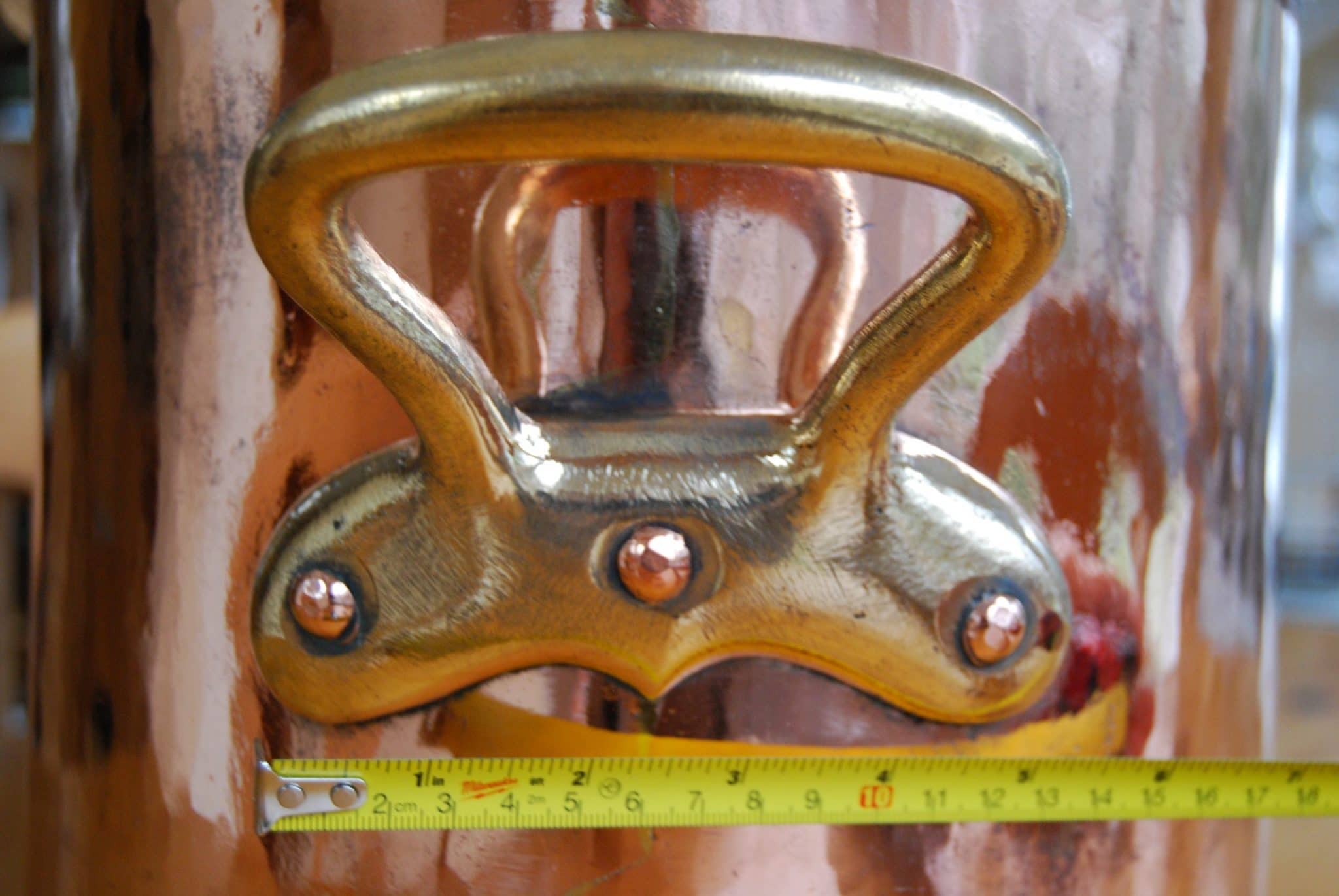

19th-20th century, Dehillerin
This is an interesting case. The baseplates look identical, but the pots themselves appear to be of different eras. The pot on the left carries an early Dehillerin stamp, making it late 19th to early 20th century; the pot on the right is stamped for Chomette Favor, a kitchenware store, and could be Dehillerin or another make. Importantly, however, the pot on the right also carries the “MADE IN FRANCE” stamp that came into use in the 1960s. It’s possible Dehillerin kept brass handle stock for decades; it’s also possible the “MADE IN FRANCE” stamp was a later addition to the pot. I don’t know. This is hard.
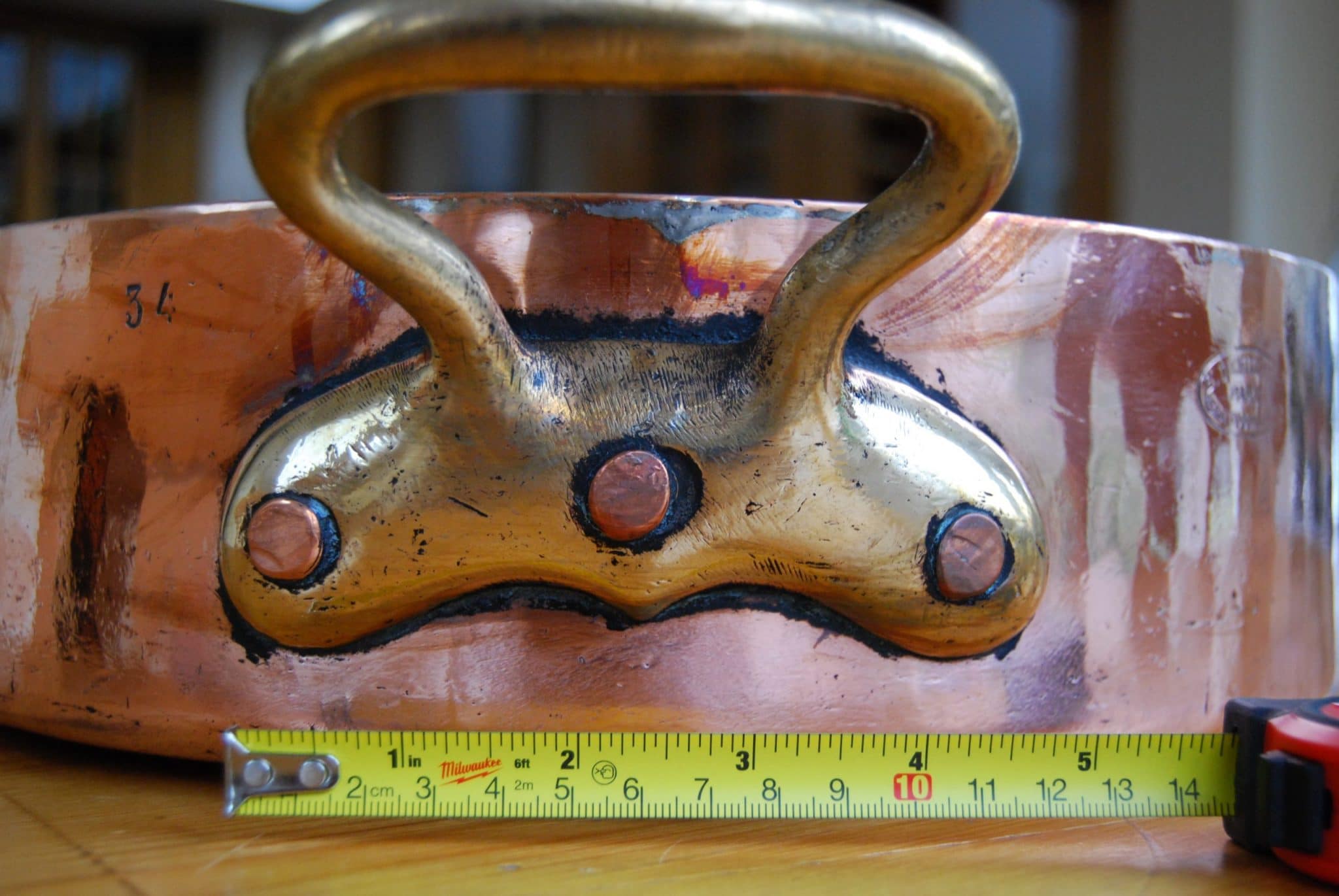
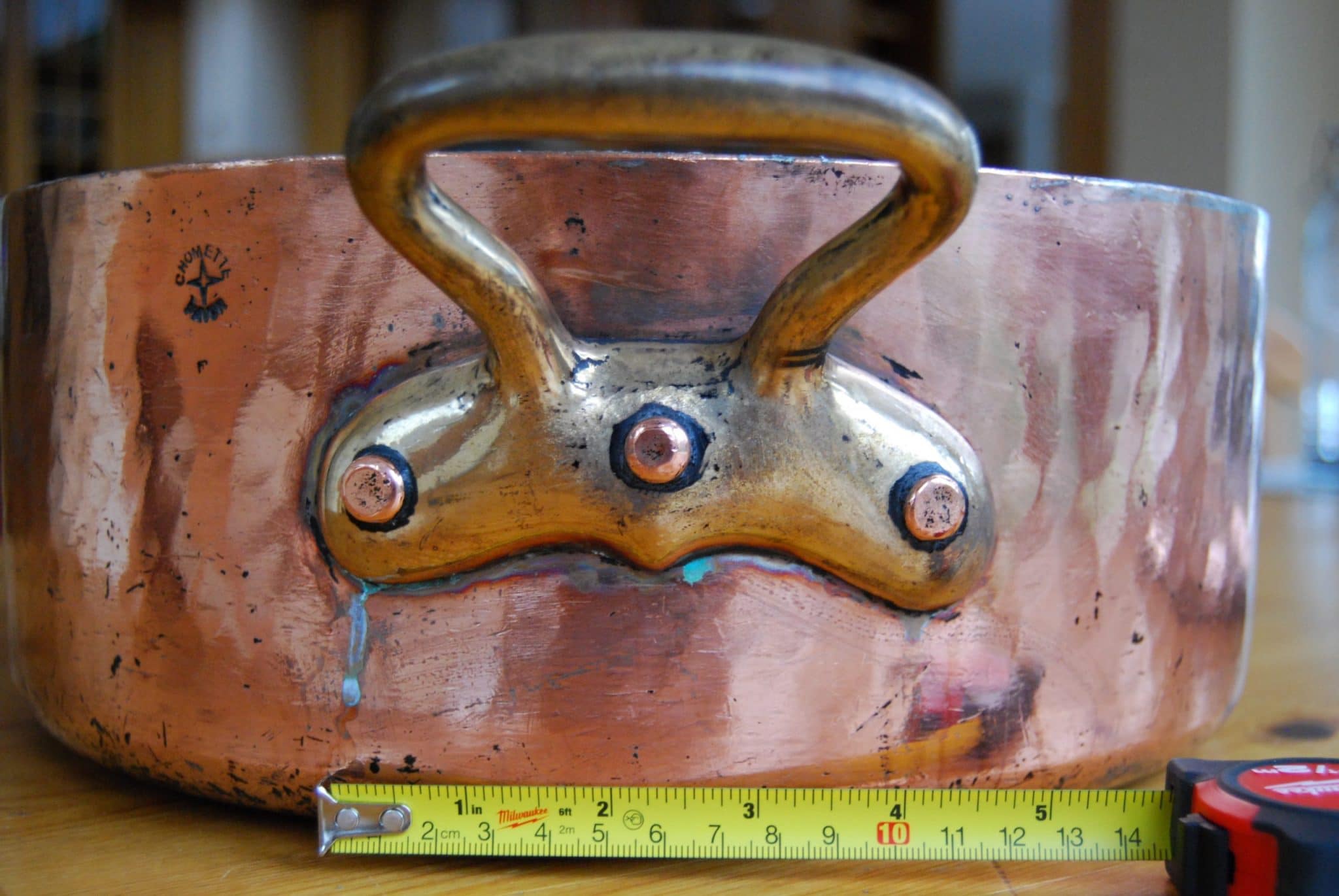
20th century, possible Mauviel
The shape and aspect of the rivets and the design of the baseplate point look identical to me. The baseplate point and curvature continue to soften relative to the ones above.
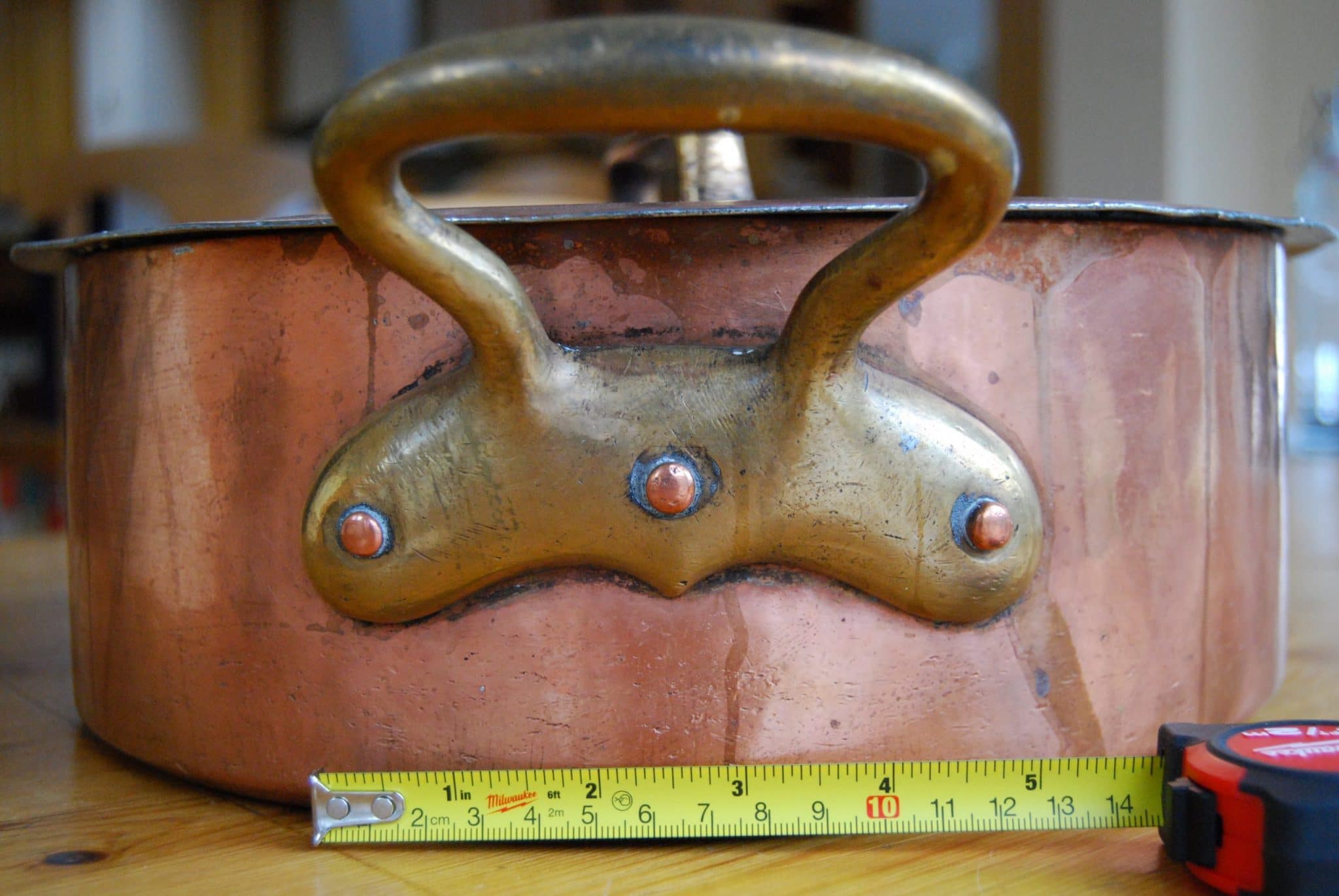
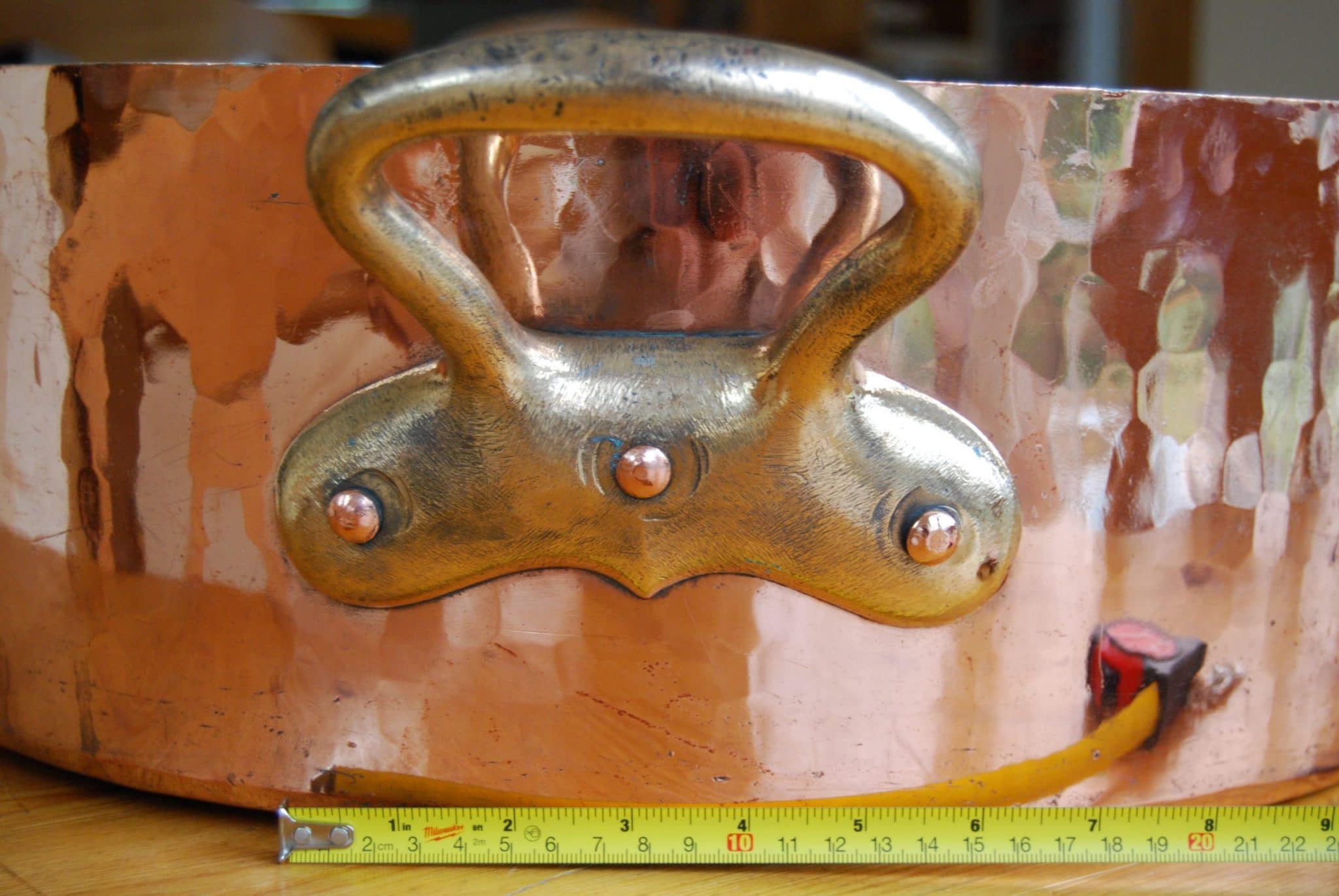
Oddballs
I think the pan on the left is Mauviel make but the baseplate is thinner than the others I have.
The one on the right is Mauviel for Matfer with the chef’s hat stamp they used after 1967. It is unfortunately a pretty terrible casting.
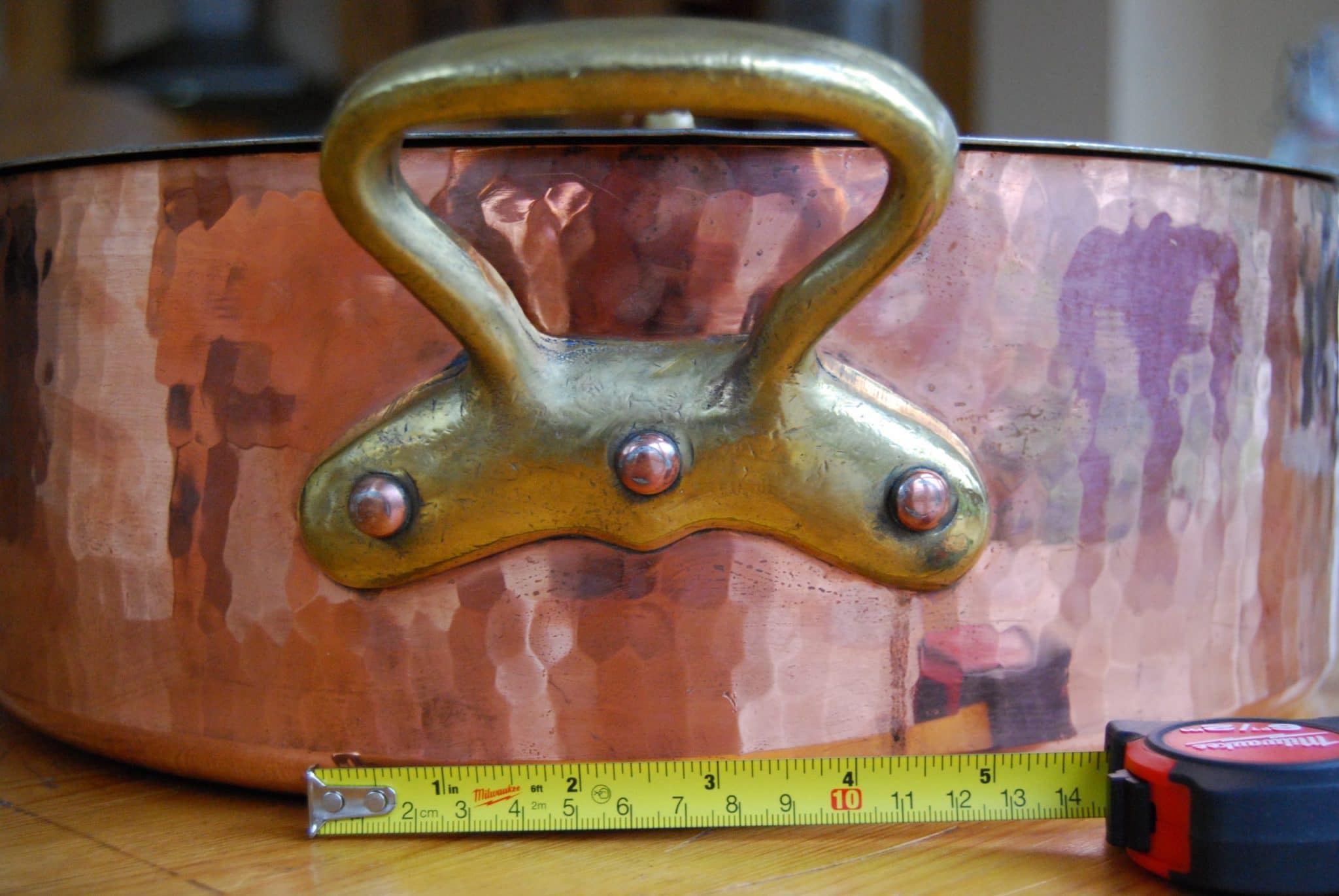
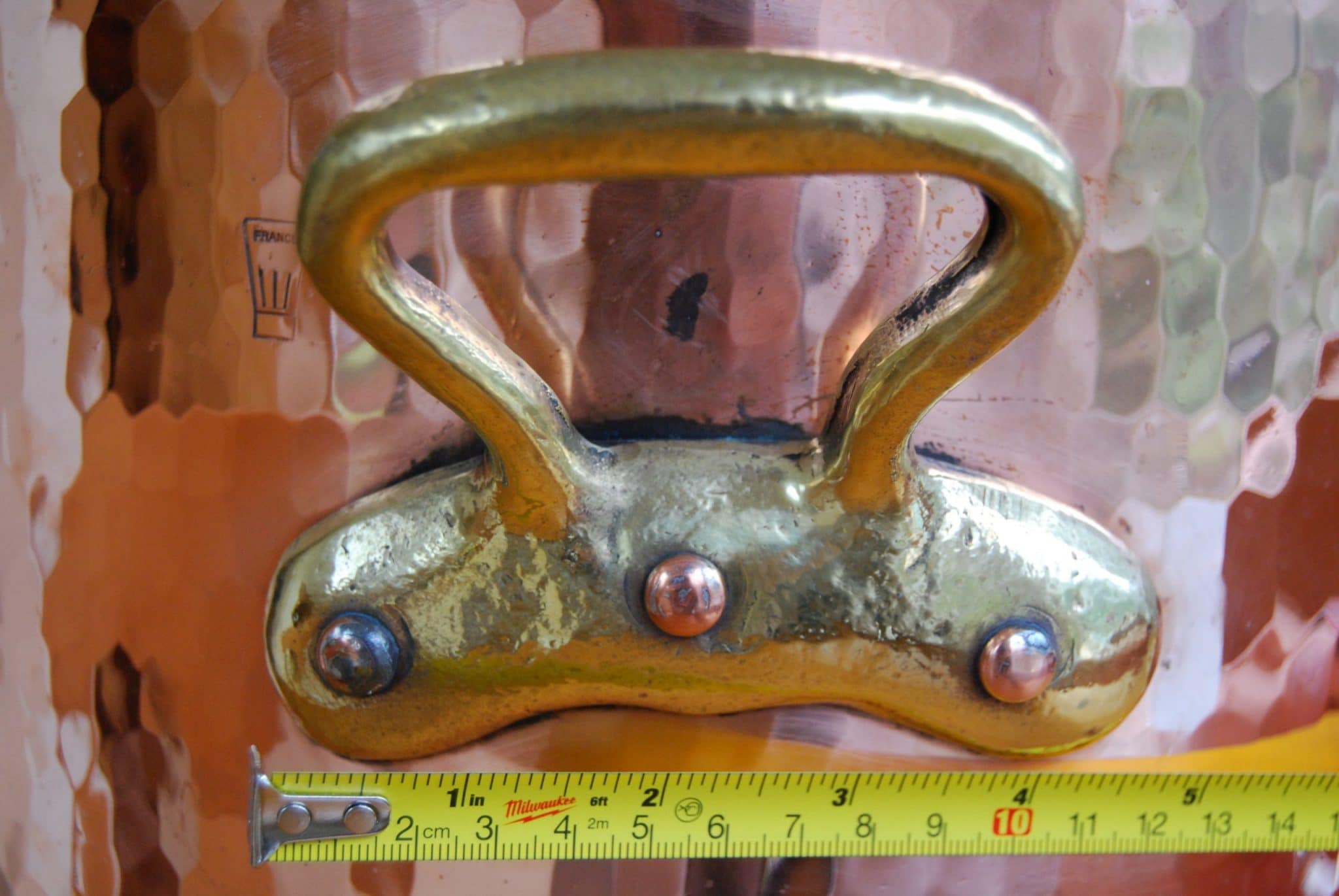
Type II: Wide handgrip flare
In this style, the projecting handle prongs have a more pronounced outward curve as they widen for the handgrip.
19th century, Duval and Dehillerin
The rivet spacing, rivet aspects, and baseplate points and curvature on all of these look virtually identical to me. Duval was a coppersmith that went out of business in 1896, but they must have been either supplying or sharing a supplier with Dehillerin during the same period of time because the known Dehillerin handle is identical.
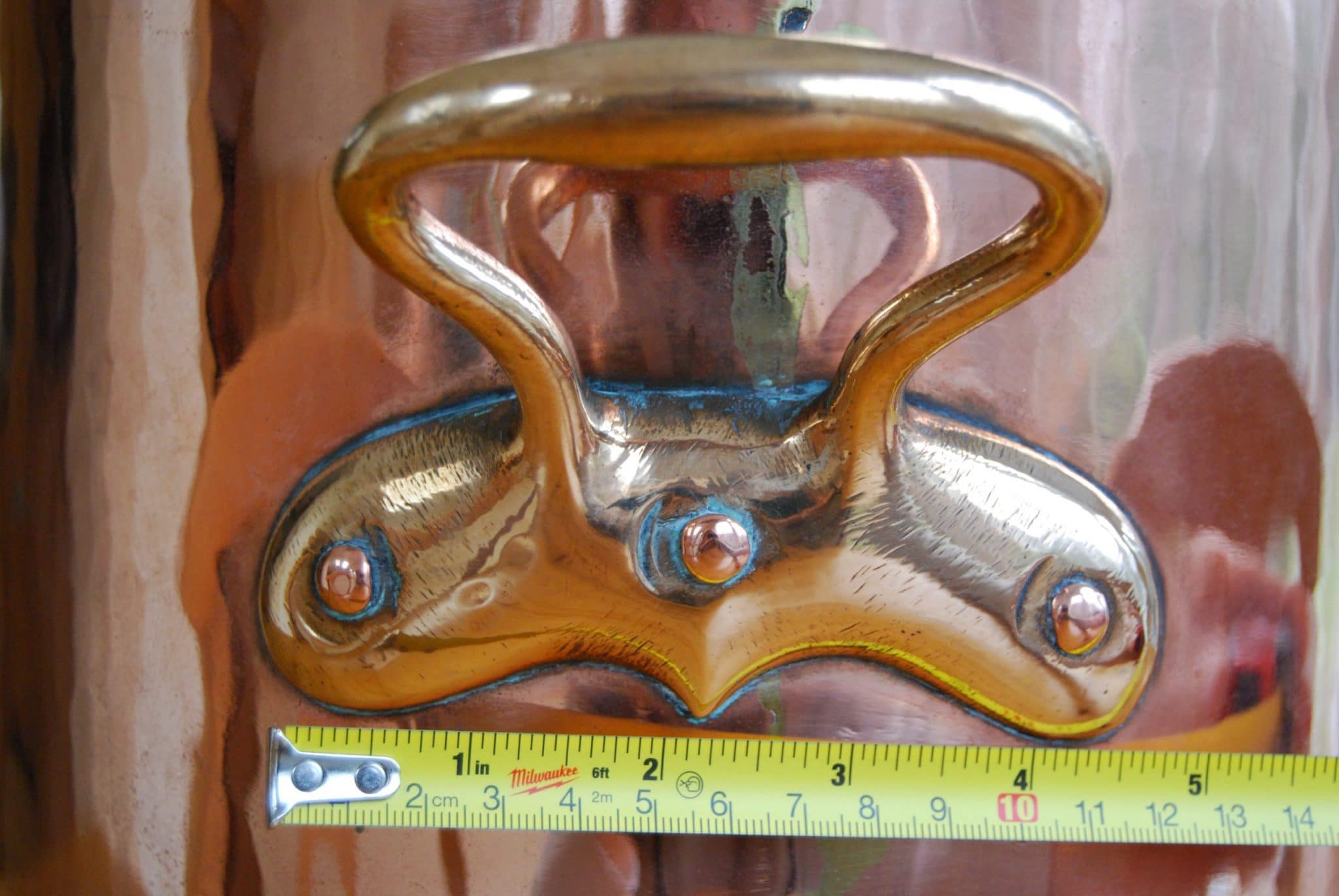
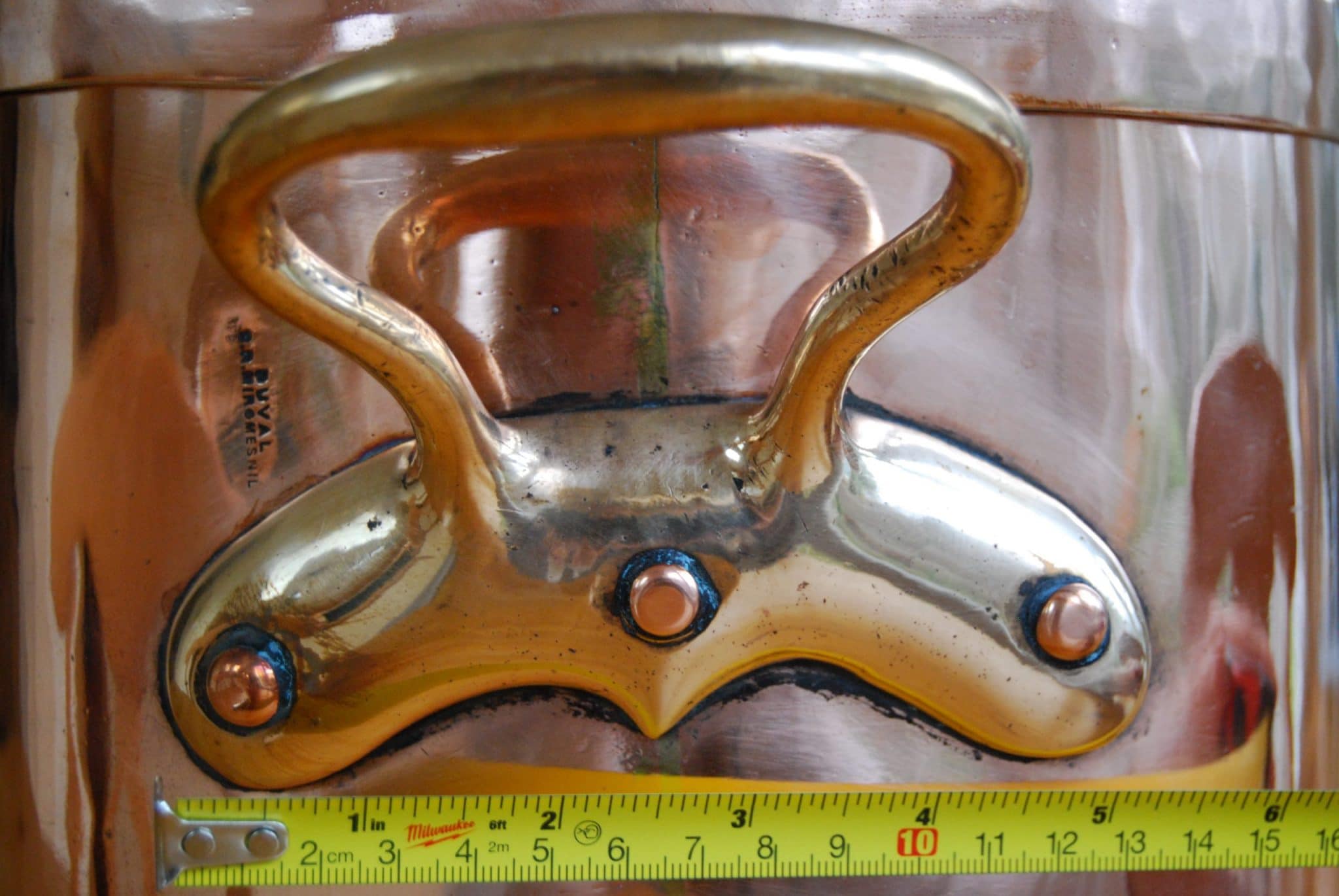
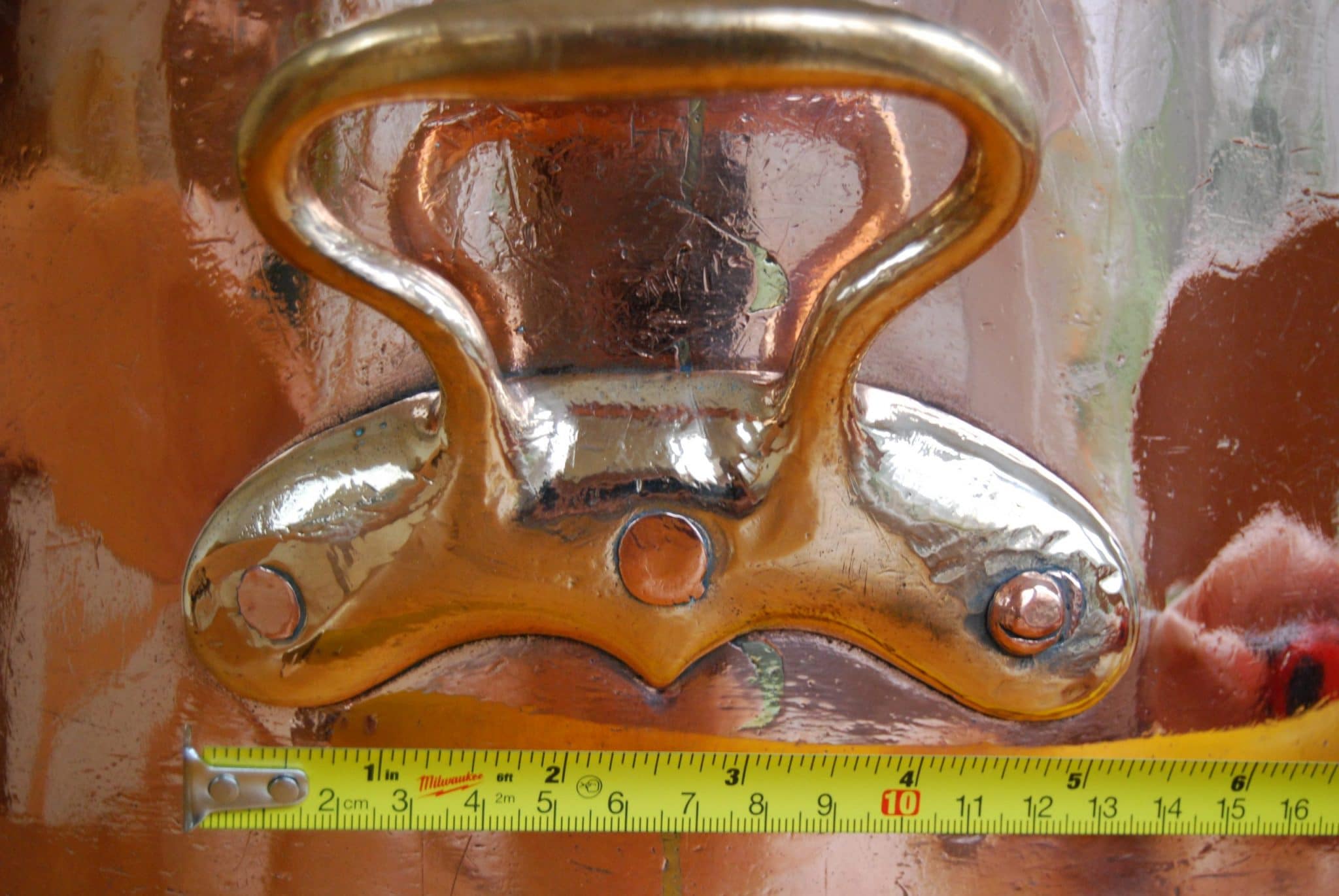
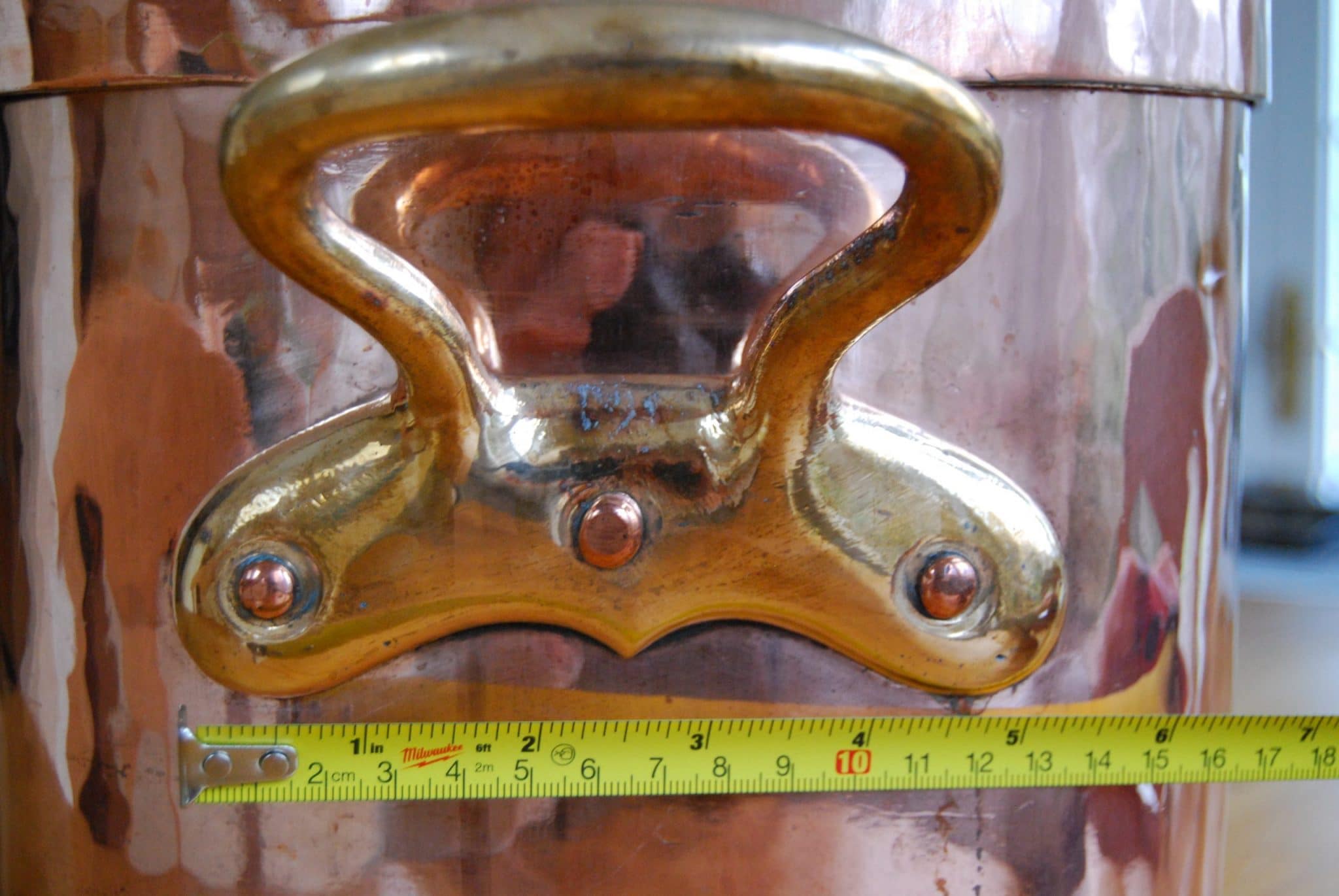
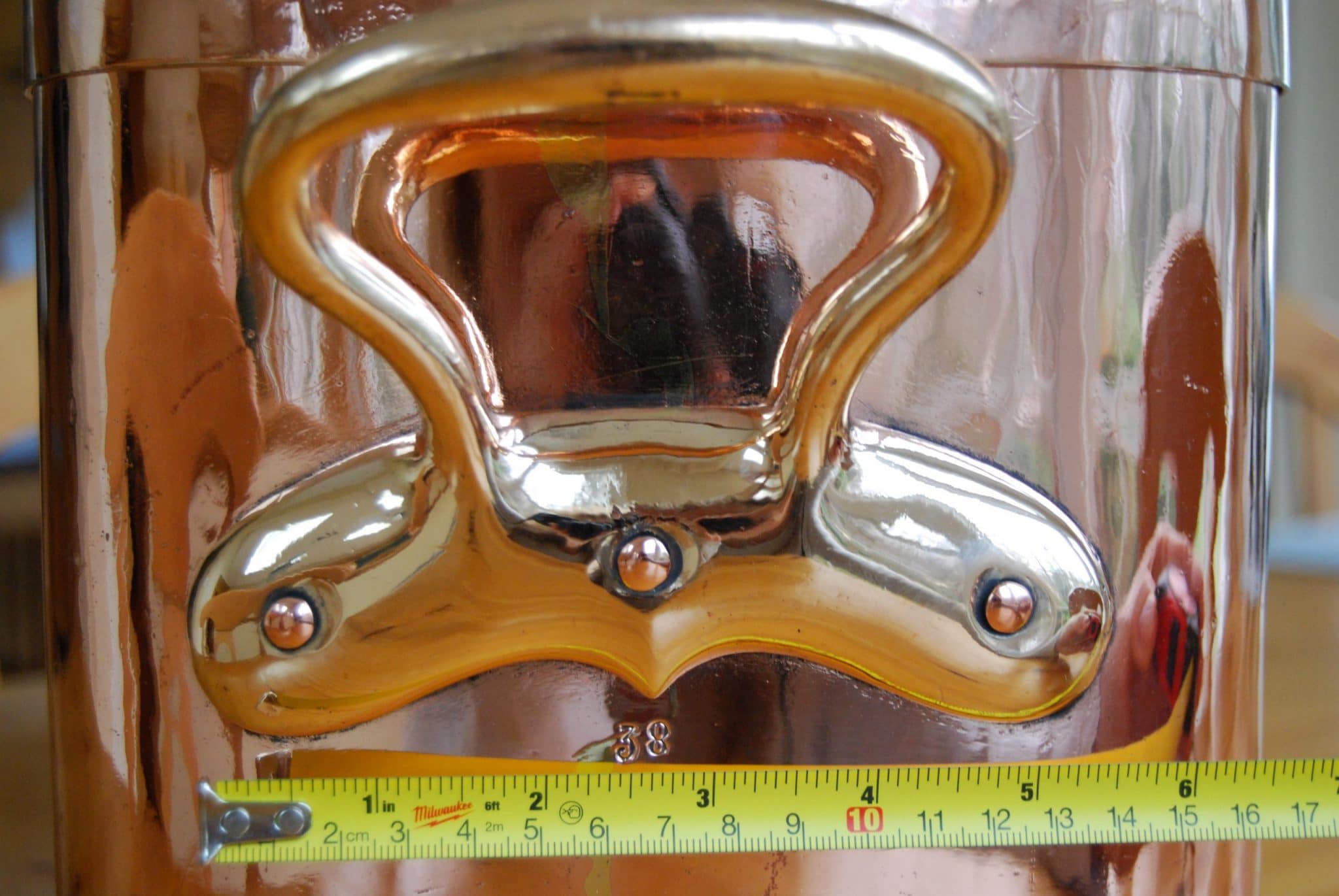
20th century, Mauviel and possibly others
This style is very similar to the 19th century style but the baseplate peak and curvature are both softened and the rivets are spaced slightly further apart. Within these major differences, I see multiple groups that I think are the result of different designs or casting runs.
Group I
I see a “droop” on the right side of the baseplate. I’m not sure whether it’s the rivet positioning or the shape of that side of the baseplate, but it’s on both of these pans.
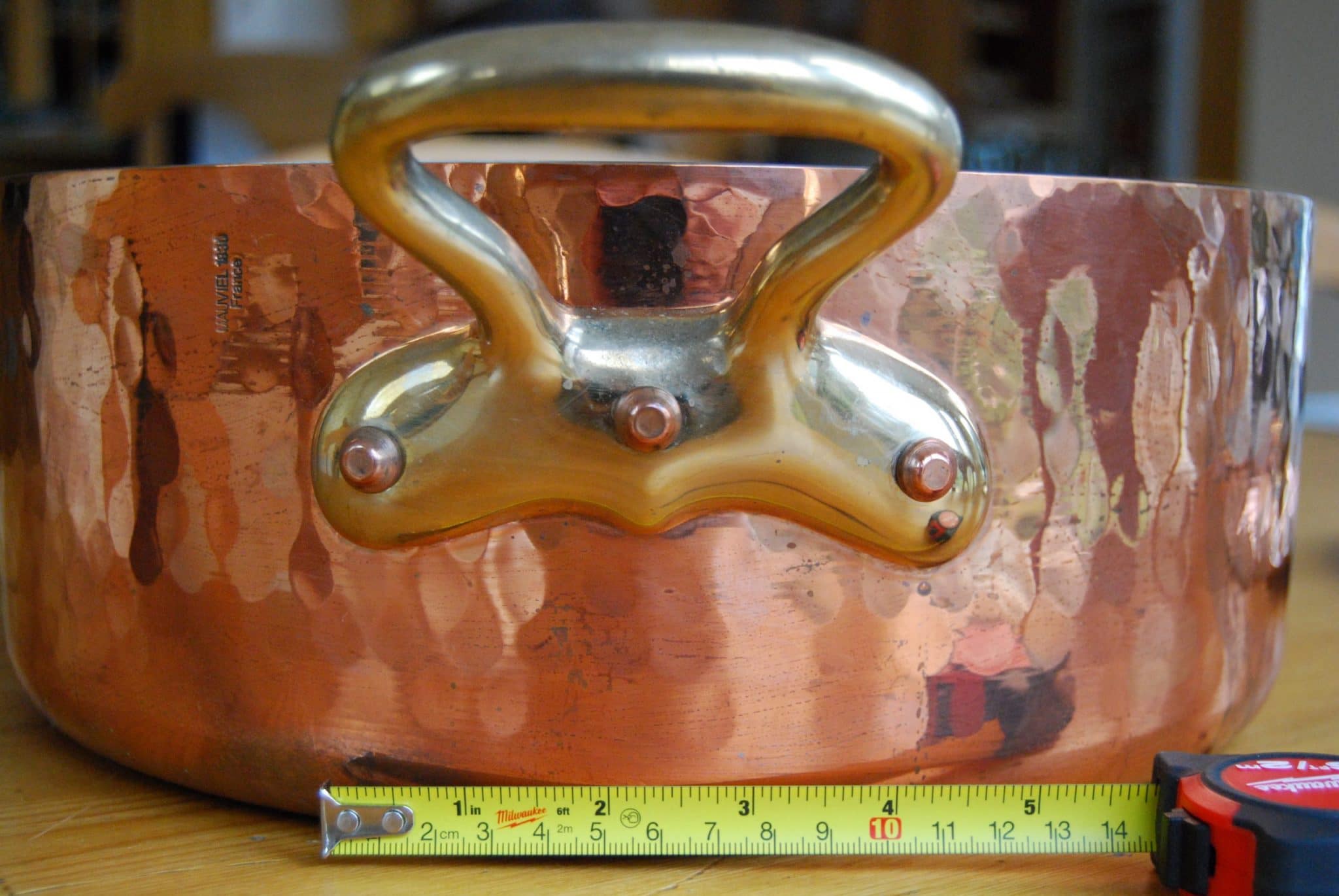
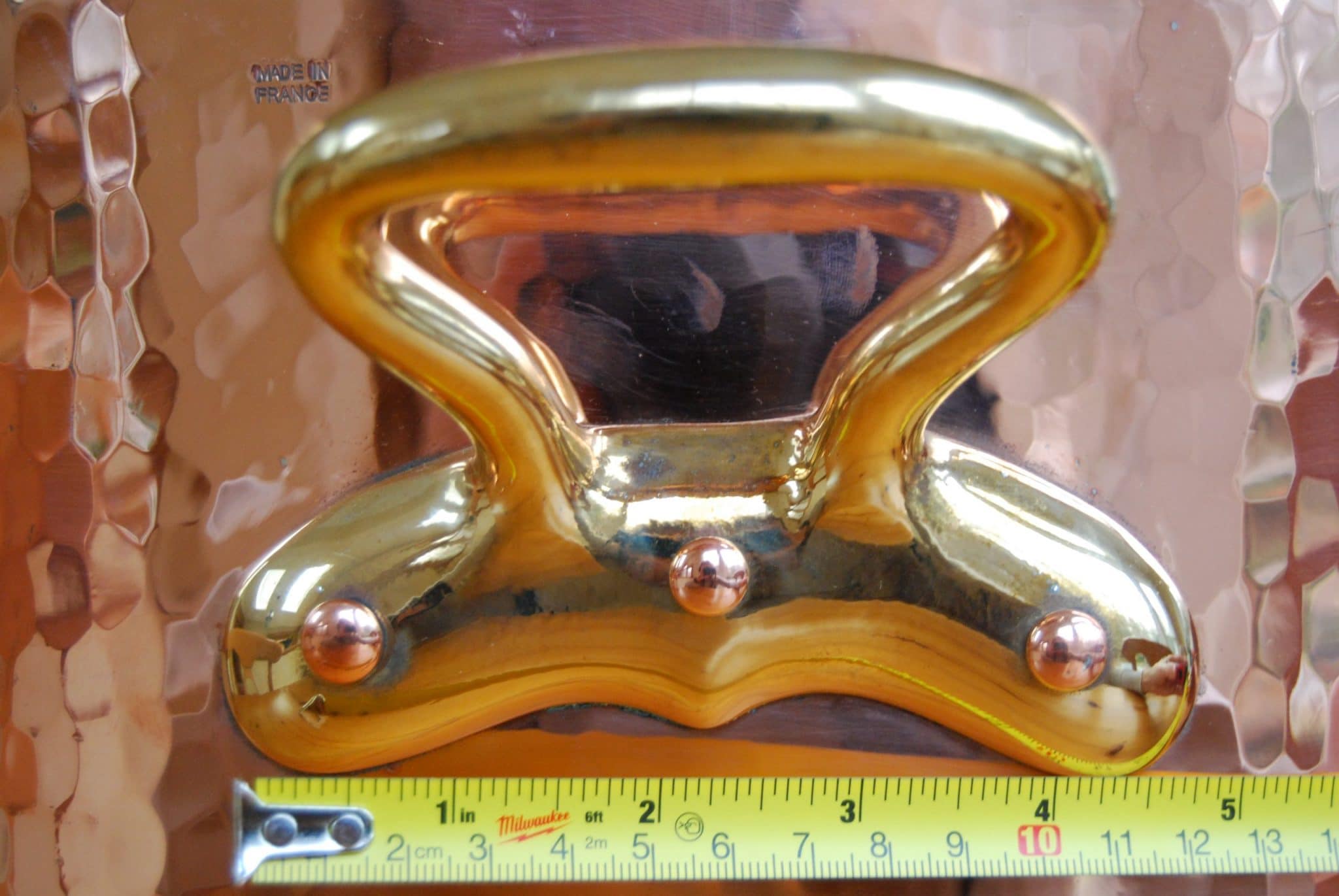
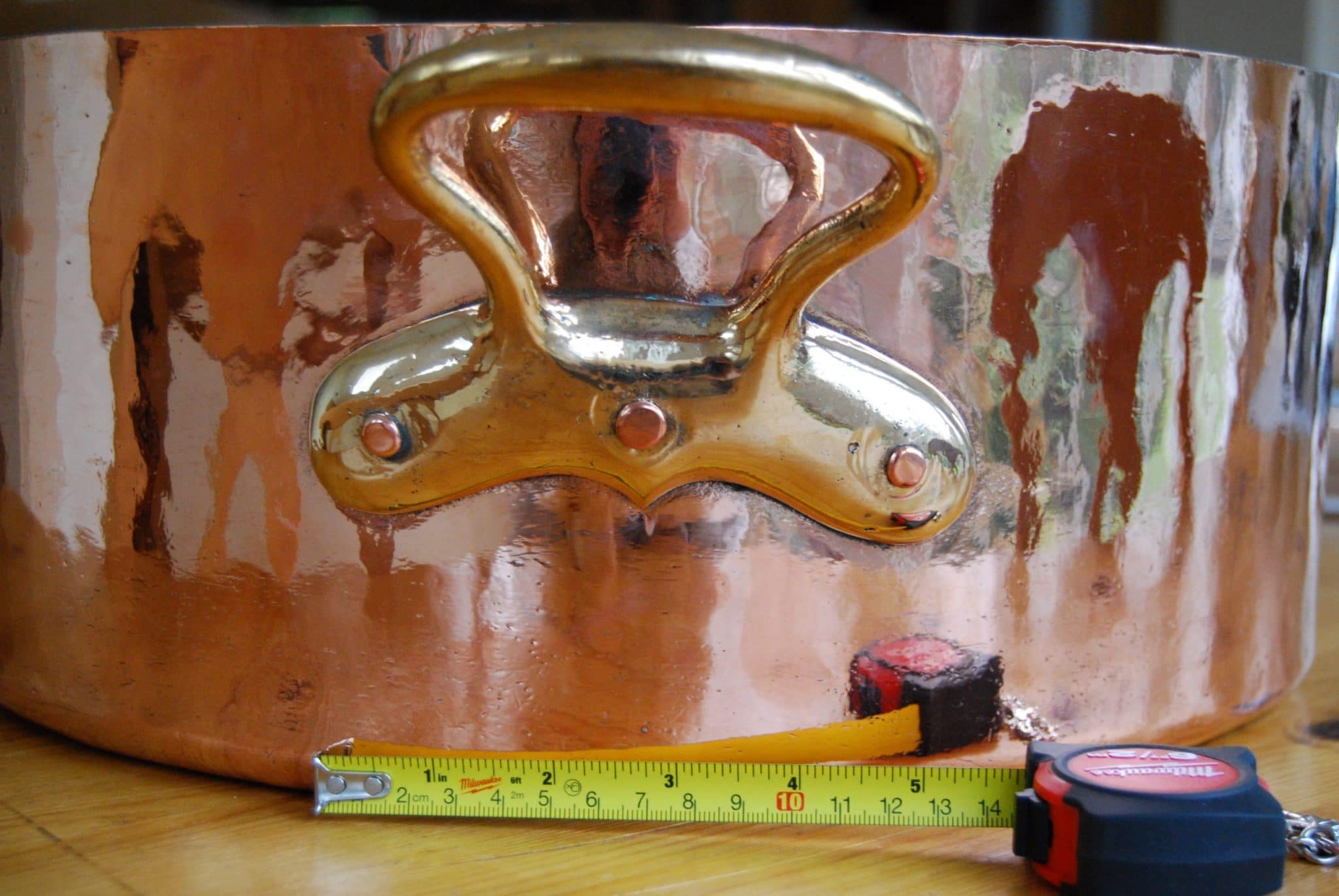
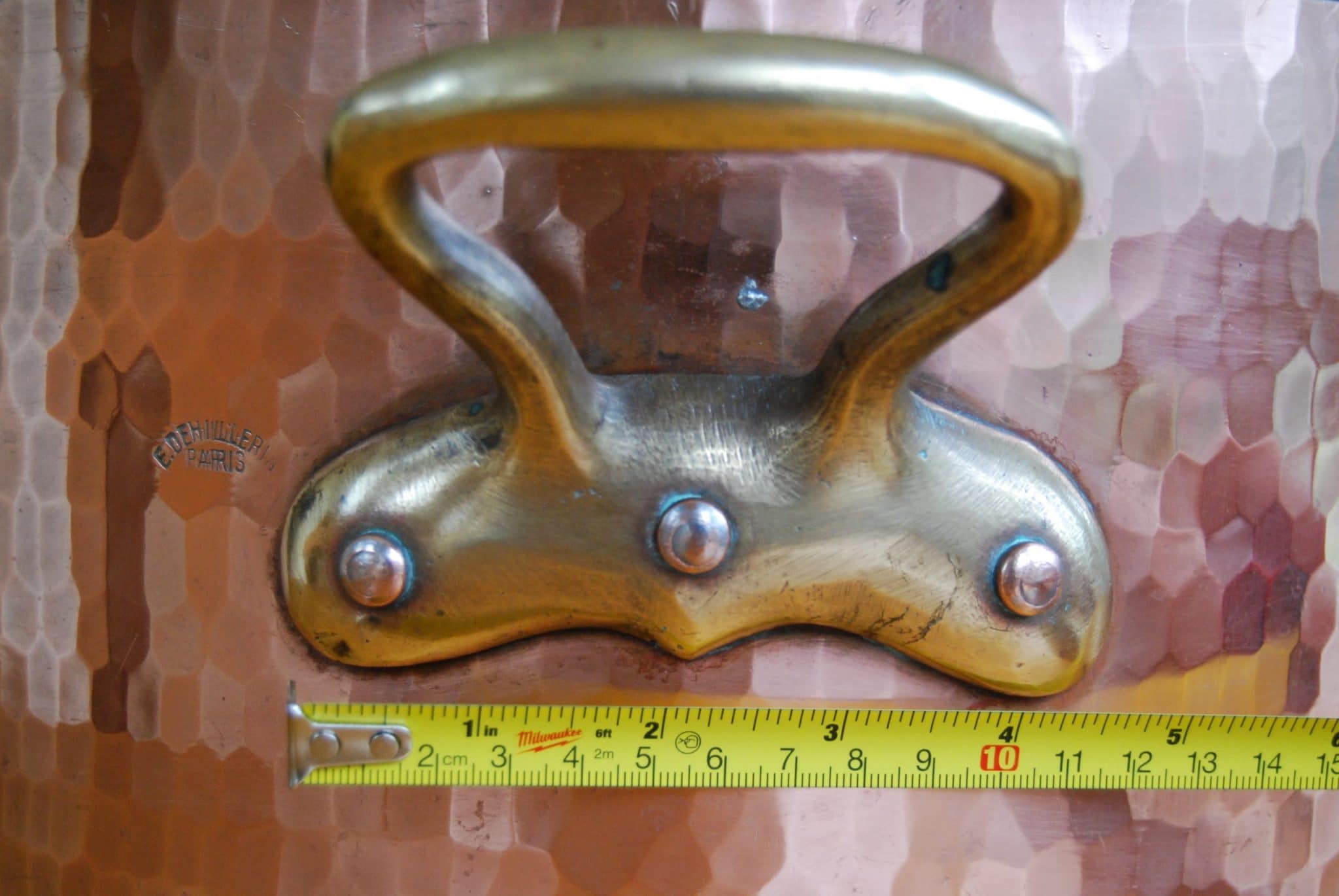
Group II
These do not have the right-side droop as group I and the central rivet is positioned slightly higher to my eye. (These are cast pieces, not drilled, so the rivet holes are fixed.)
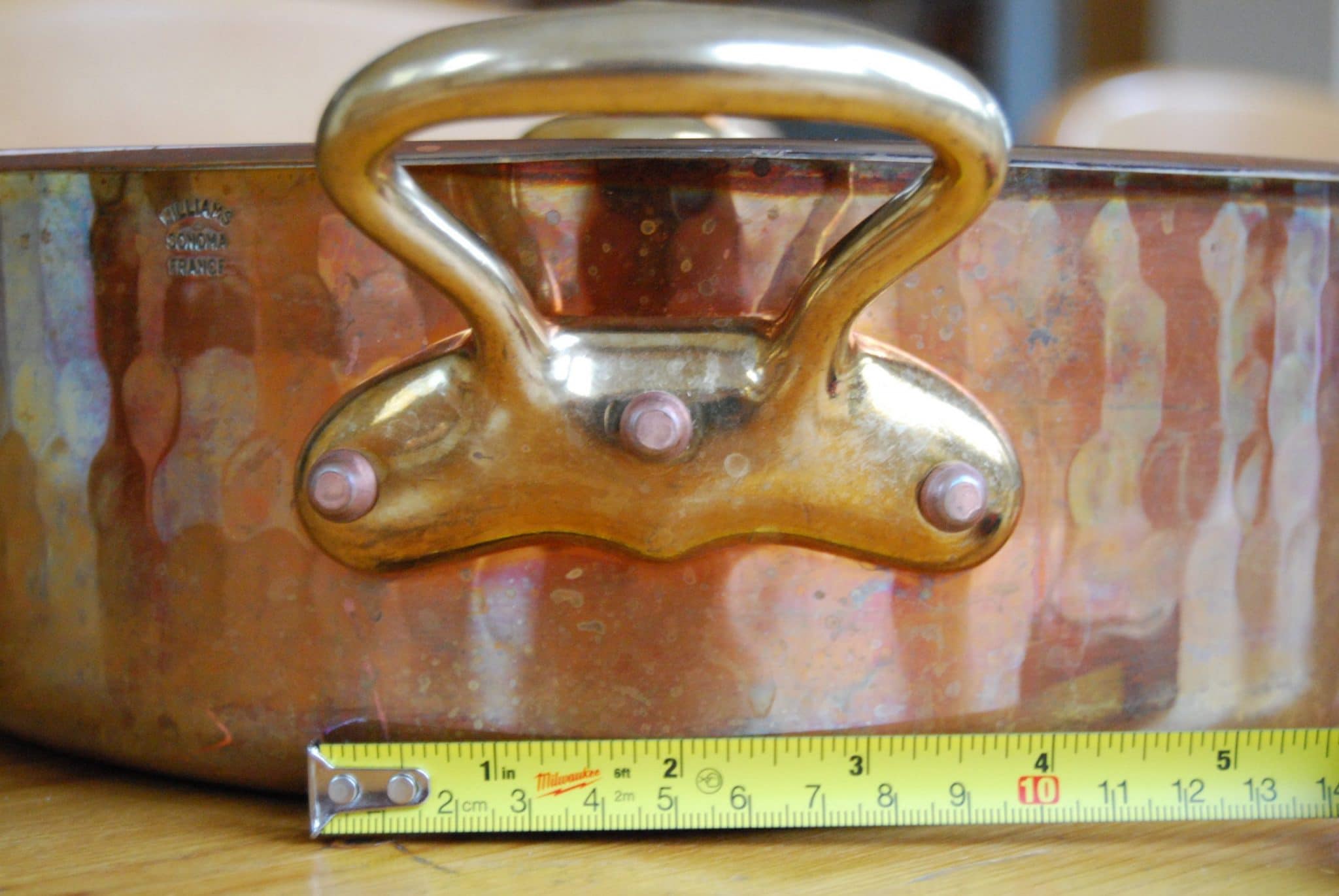
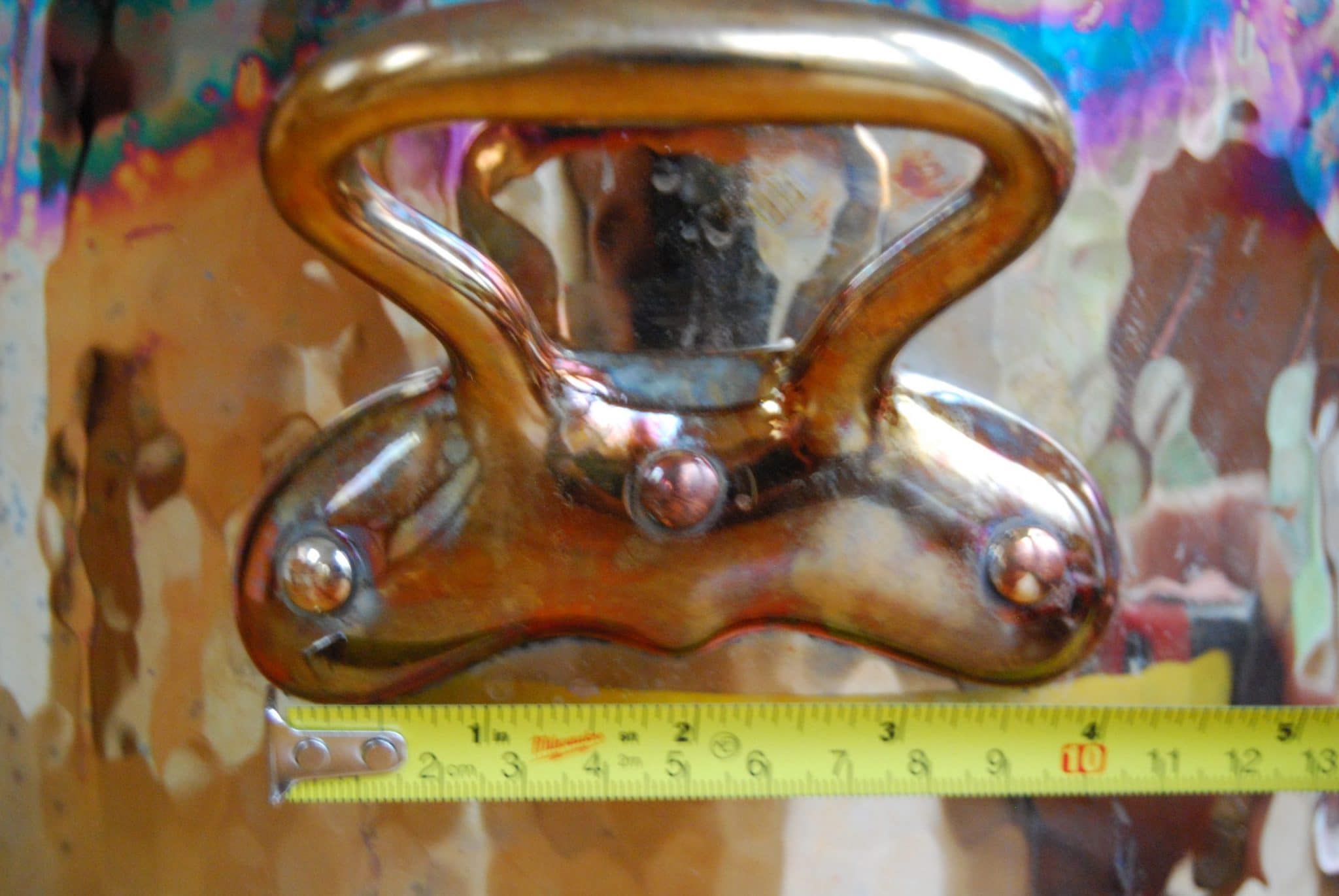
Group III
This set has no droop and has evenly spaced and positioned rivets.
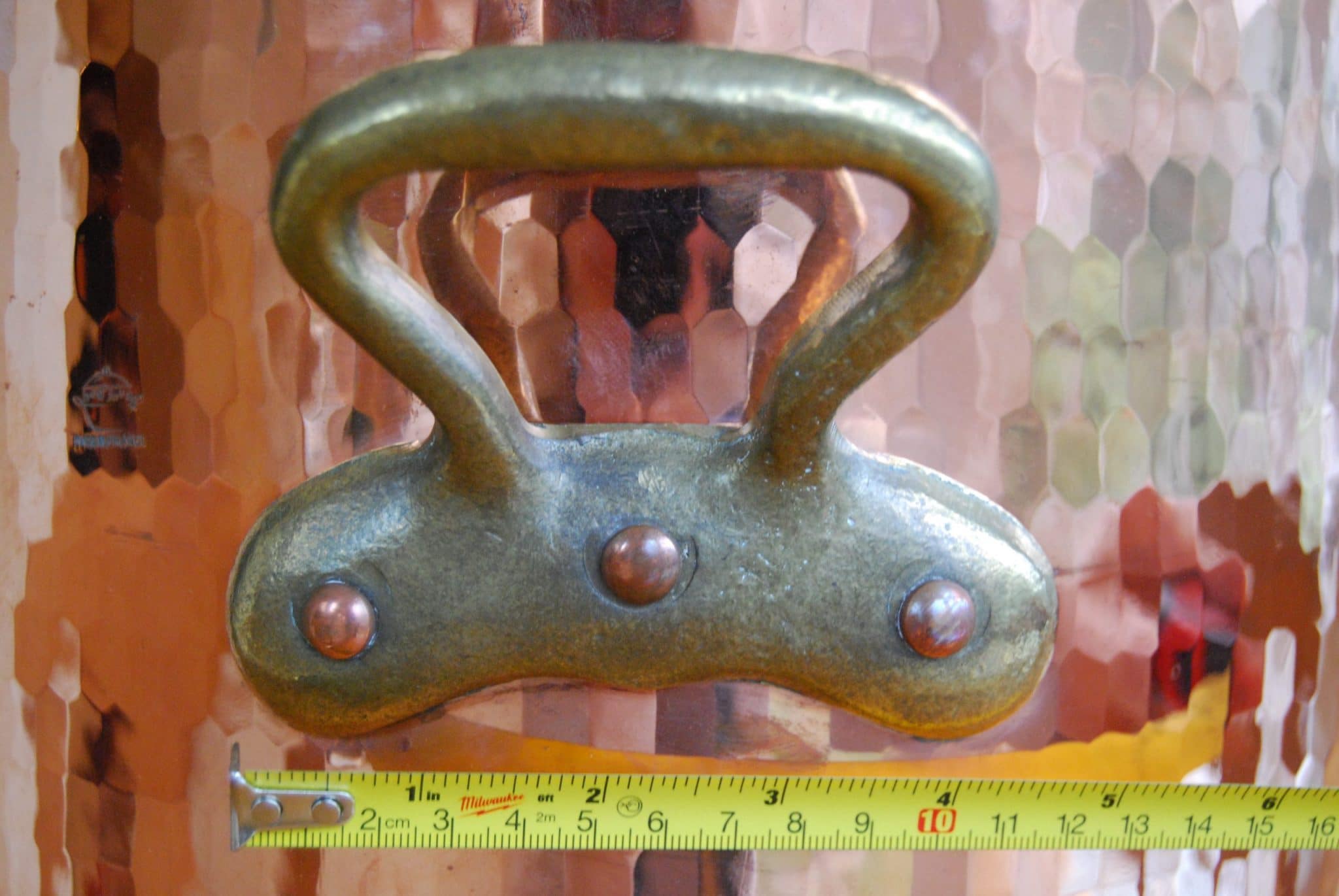
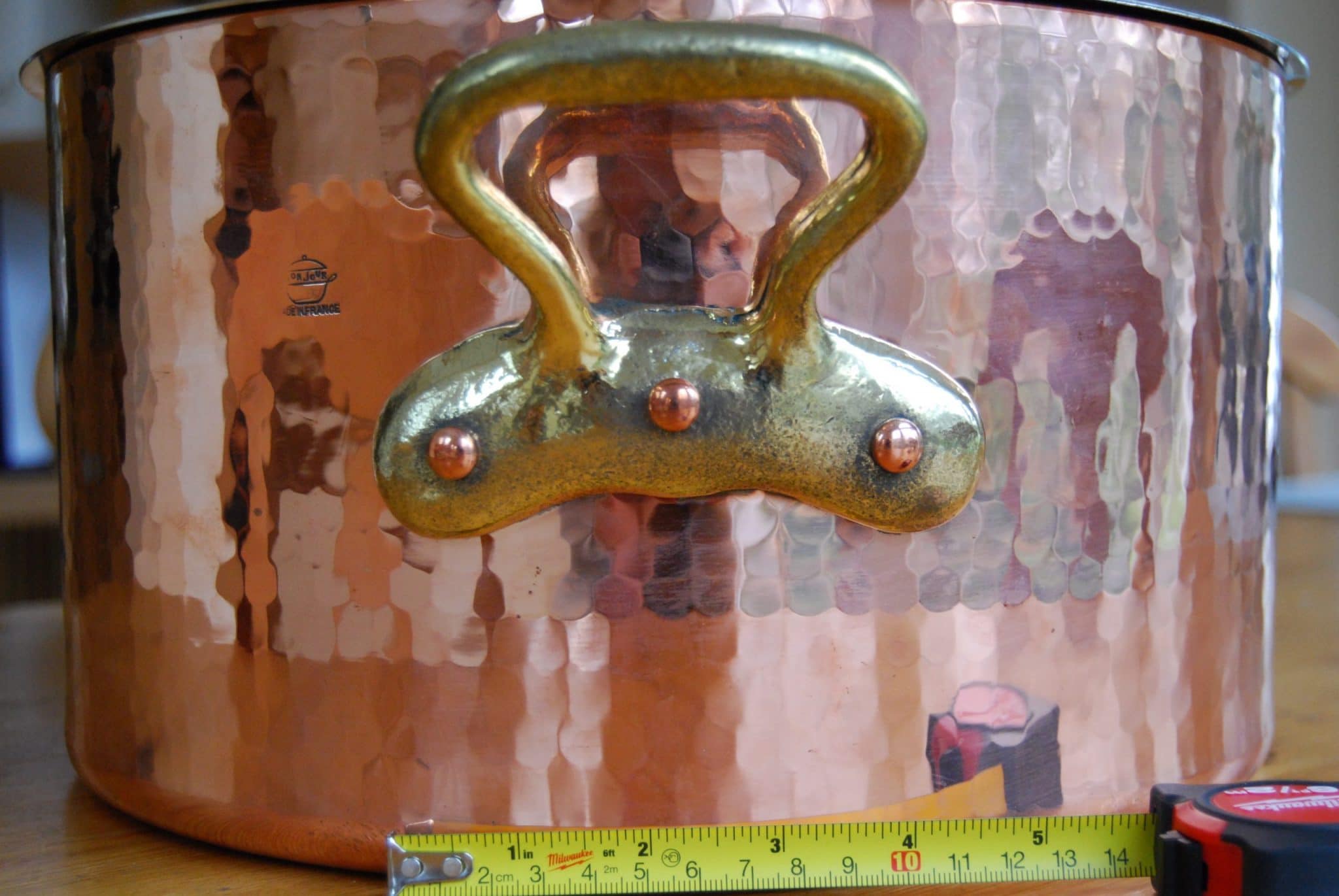
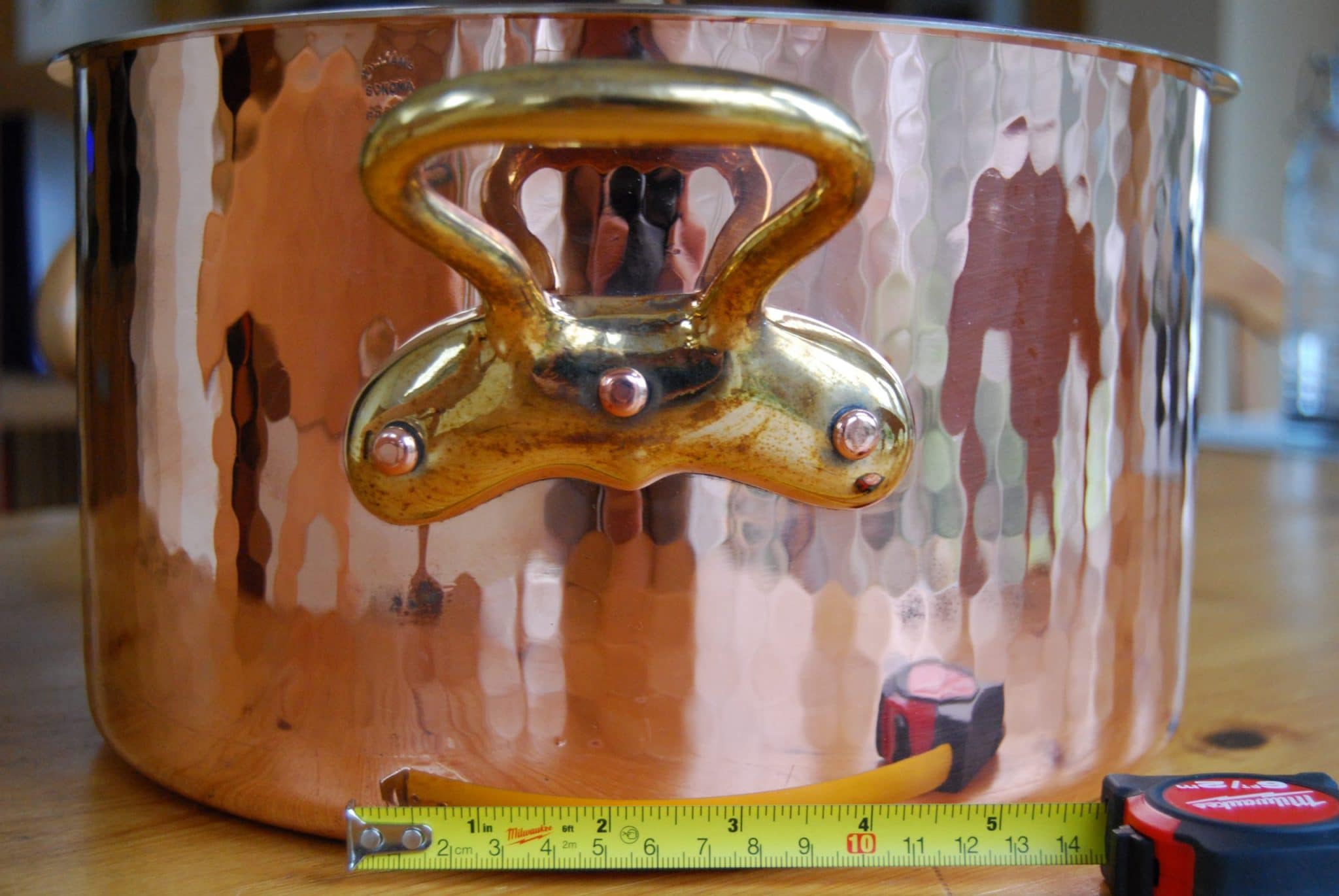
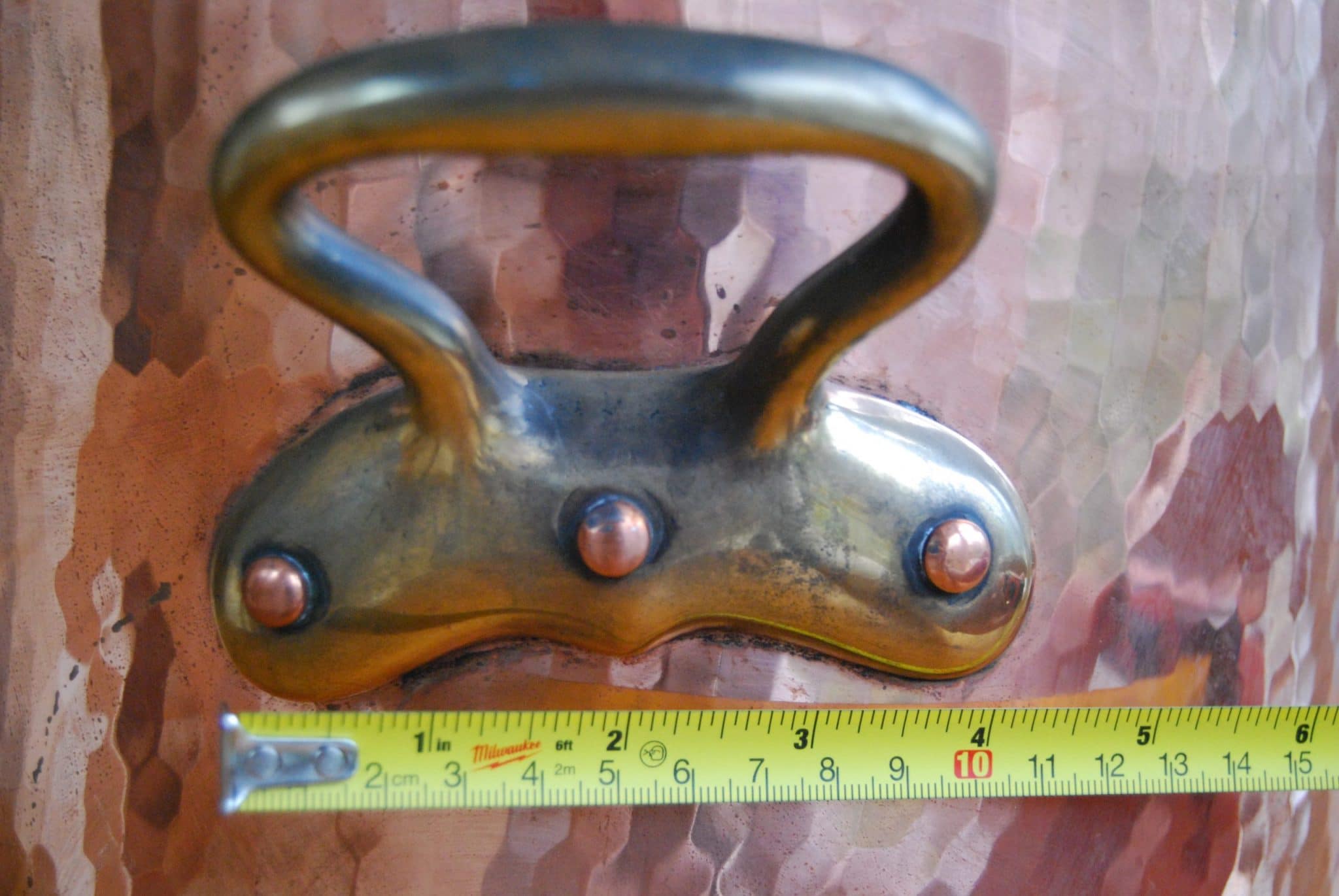
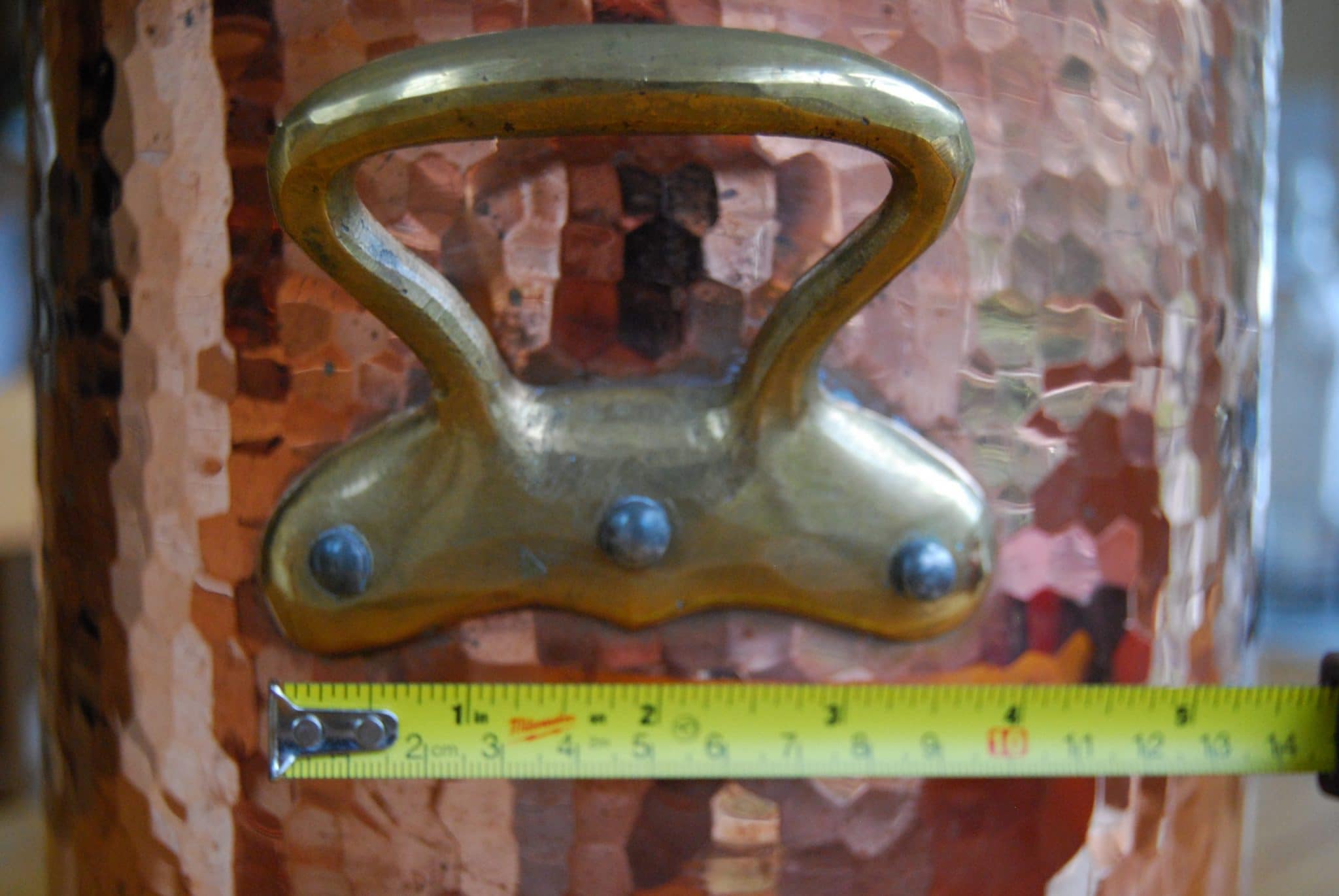
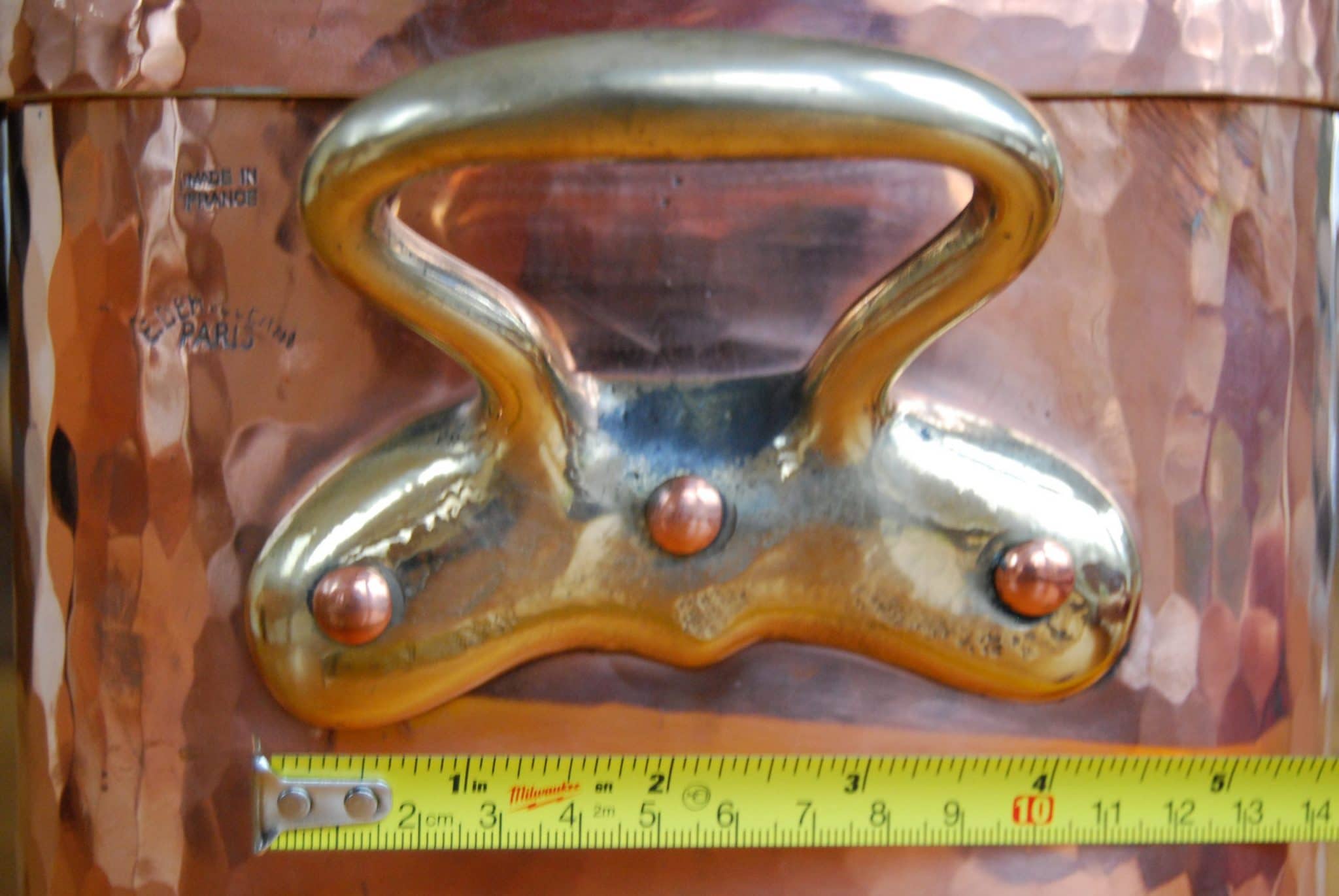
Type III: No handgrip flare
This is the third type, easy to recognize because there is no curve or flare to the projecting handle prongs. The prongs extend from the base plate in a straight line until they turn sharply to form the handgrip.
20th century, Mauviel
The first two I suspect are actually bronze, and they are identical to me. The third is brass and the baseplate looks slightly fatter to me, but it’s 10 cm wide while the other two are 8cm and would have necessitated a different mold.
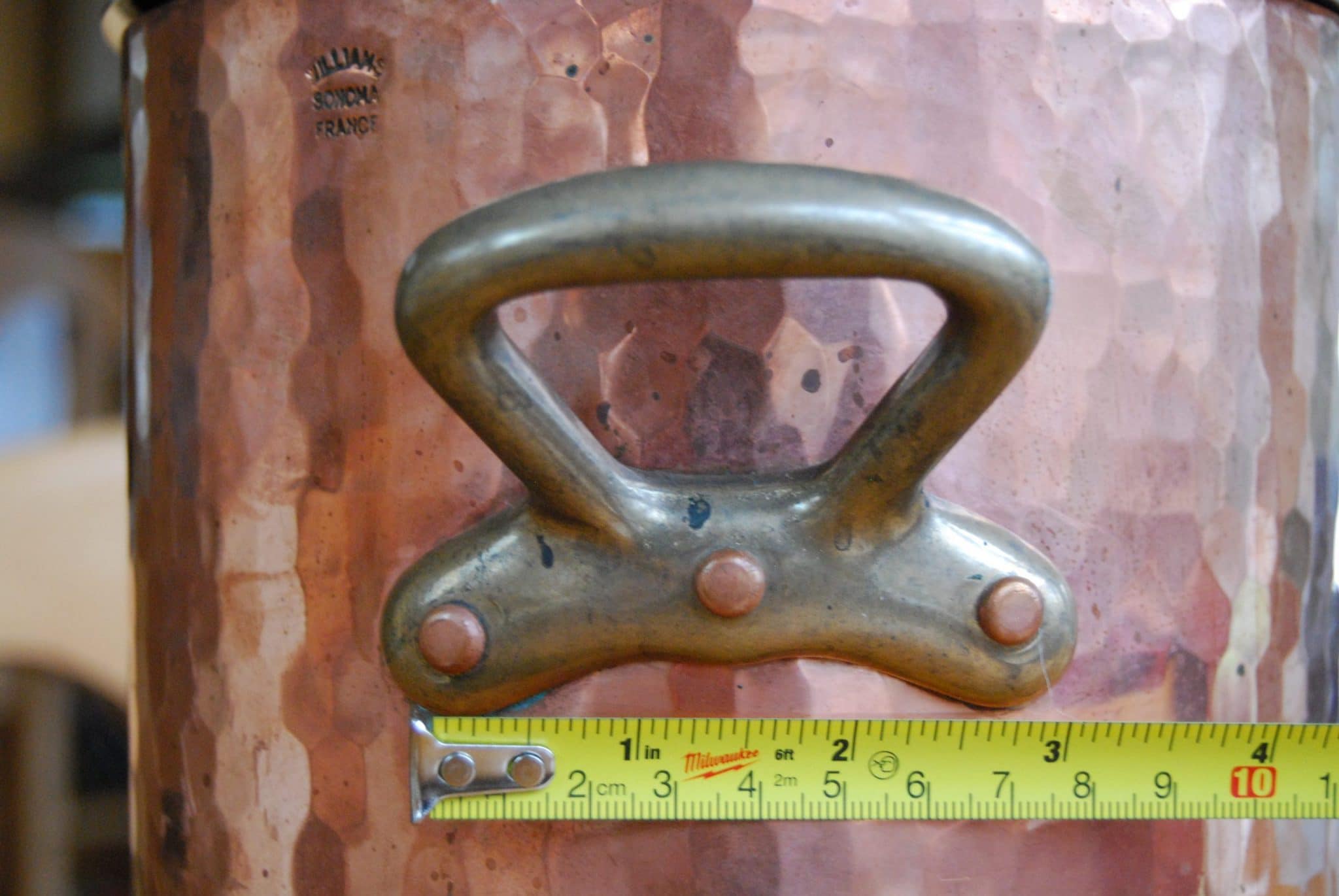

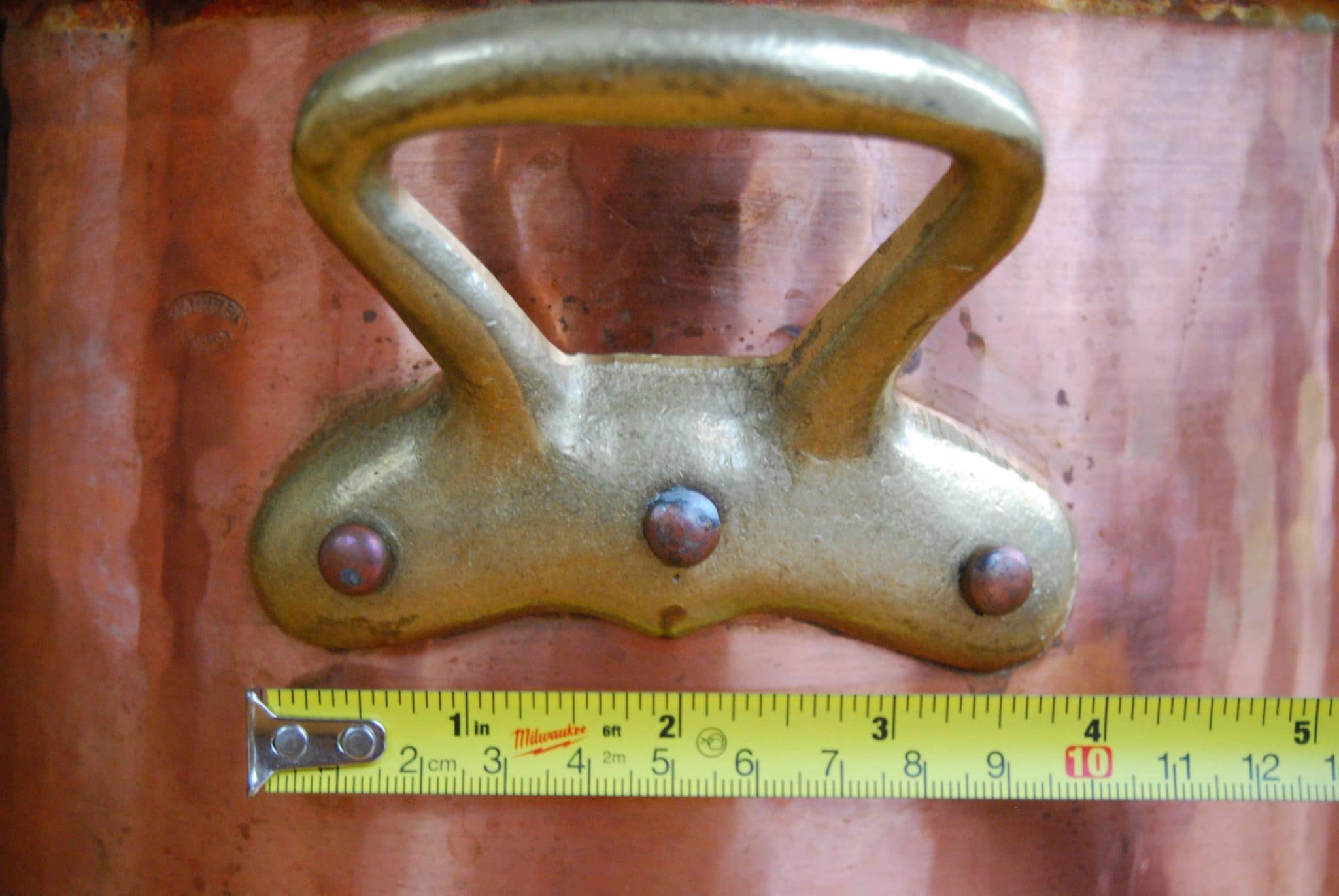
Conclusions
This is a poor study indeed, limited as it is to the pans I happen to have on hand, but it still is interesting to me. Here’s a gallery with one of each type so you can see the differences I saw.








I’m not surprised to see 20th century Mauviel- and Dehillerin-stamped pieces with identical handles, as Dehillerin became a heavy distributor for Mauviel after World War II. In fact I’m willing to assume that any piece with a handle identical to a known Mauviel piece is likely also Mauviel, so common is that mark.
I encourage you to keep looking. What do you see? What other handle types are there?
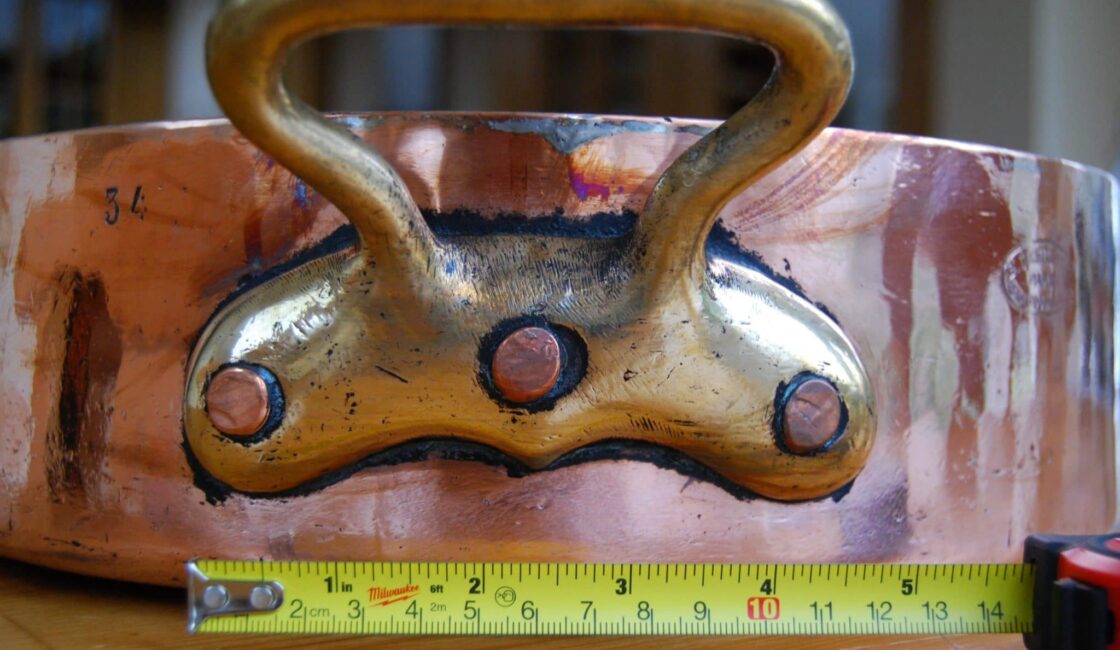
Hello, Great review here even though there is a lot of uncertainty. I’m inspired to more thoroughly photograph the handles of pans before I sell them.
I’ve been noticing a lot of variation on the texture of brass handles from very rough on some Matfer and Bonjour stamped pieces, to very smooth polished brass on other pans (usually MIF stamps).
Would love to get your thoughts on those.
Thanks,
Cameron
Hey Cameron! My immediate thought is that Matfer and BonJour are likely Mauviel of a similar period, so their handles may be from the same stock. I have noticed a “rough period” in mid-century Mauviel work — yellowy metal, rough flat planes, no smooth shine. This page is a work in progress and I’m thinking about reworking it. I fear it’s pretty much a photo gallery without a lot of useful information, and I think I can improve it. (I’ve also learned a lot in the time since I put it together.) I’ll put it on my list of pages to revise.
We are wondering what the ornate braided brass handles on our set of tin lined copper pans might tell us about the maker and date of origin. Is there a way to send you a photo?
Thanks,
Suzanne and Lanse Holmes
Hi Suzanne! I’d be happy to take a look. I’ll send you an email in a moment. Thanks!
Your articles are very interesting and informative. I am wondering about the stamps on two copper pots that were given to me and that I am planning to sell. May I send you photos and would you be willing to help me identify them?
Thank you,
Nancy
Hi Nancy! Sure — I’ll send you an email.
Hello. I’ve been looking for information on a copper fish pan which has no rivets on the handle, something I have never seen before. Is this common? Thank you!
Brass handles are also often found on roasting pans, where they form other groups. I was particularly struck by a handle design that apparently convinced all major manufacturers for well over 100 years! A rare constant in copper cookware. I found this handle basically unchanged on roasting pans made by well-known manufacturers such as Briffault, Gaillard, Dehillerin, Jacquotot and Mauviel between about 1880 and 2010. The double curved rounded handle opens with discreet “arrowheads” into a long rectangular but relatively narrow support plate, which in turn is attached to the roasting pan with 3 rivets. It was not until 2014/15 that Mauviel made a change to the design of these handles in the traditional series. First, the transition from the actual handle to the support plate was smoothed (i.e. the “arrowhead” was removed) and a few years later the handles were only attached with 2 rivets.
It would be useful to add at least this further handle design to the post.